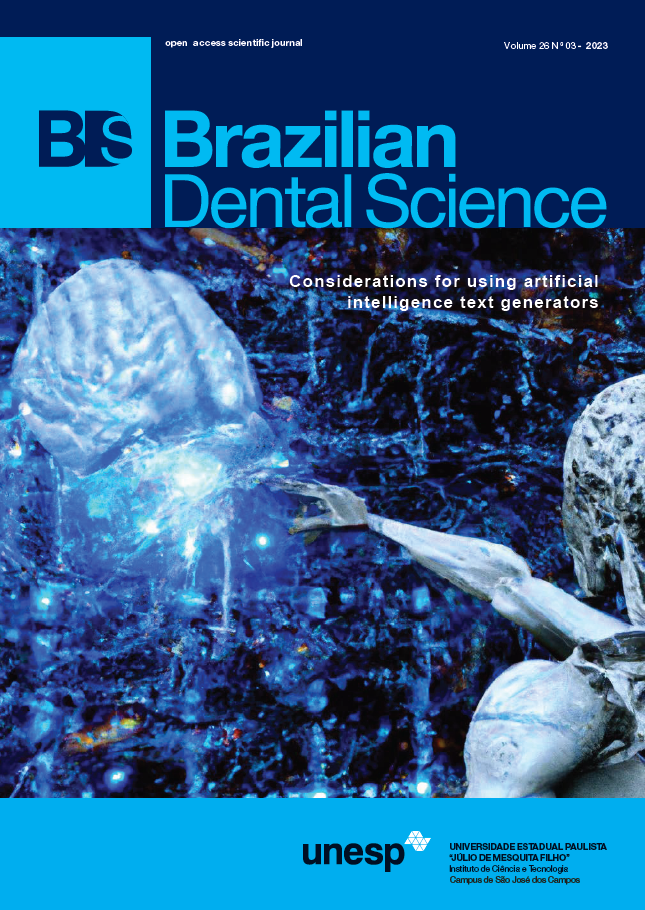Effect of novel pre-sintered zirconia surface treatment on shear bond strength between zirconia and veneering porcelain compared to conventional surface treatments: an in-vitro study
DOI:
https://doi.org/10.4322/bds.2023.e3838Resumo
Objective: to evaluate the effect of novel zirconia surface treatment method on shear bond strength between zirconia and veneering porcelain compared to air abrasion and CoJet surface treatment methods. Material and Methods: twenty-one zirconia ceramic discs were fabricated with diameter of 7mm and 3mm thickness and divided according to surface treatment into three subgroups, control group I: Air Abrasion (n=7), group II: CoJet (n=7) and group III: Z-etch (n=7). Porcelain was built over the zirconia specimens with a customized mold and fired in a ceramic furnace. All specimens were thermocycled (20000 cycles) between 5°C – 55 °C with a dwell time of 30 seconds in distilled water and shear bond strength of veneering porcelain to each zirconia specimen was tested using a universal testing machine. Results: numerical data were explored for normality by checking the distribution of data and using tests of normality (Kolmogorov-Smirnov and Shapiro-Wilk tests). One-way ANOVA test was used to compare between the groups. There was a statistically significant difference between the three groups (P-value = 0.002, Effect size = 0.503). Pair-wise comparisons between groups revealed that Z-etch showed the statistically significantly highest mean shear bond strength. Conclusion: zirconia coating using z-etch is showing promising results in promoting higher bond strength than conventional surface treatment methods as air abrasion and silica coating.
KEYWORDS
Air-abrasion; Dental materials; Shear bond strength; Surface treatment; Z-etch; Zirconia.
Downloads
Downloads
Publicado
Como Citar
Edição
Seção
Licença
TRANSFERÊNCIA DE DIREITOS AUTORAIS E DECLARAÇÃO DE RESPONSABILIDADE
Toda a propriedade de direitos autorais do artigo "____________________________________________________________________" é transferido do autor(es) para a CIÊNCIA ODONTOLÓGICA BRASILEIRA, no caso do trabalho ser publicado. O artigo não foi publicado em outro lugar e não foi submetido simultaneamente para publicação em outra revista.
Vimos por meio deste, atestar que trabalho é original e não apresenta dados manipulados, fraude ou plágio. Fizemos contribuição científica significativa para o estudo e estamos cientes dos dados apresentados e de acordo com a versão final do artigo. Assumimos total responsabilidade pelos aspectos éticos do estudo.
Este texto deve ser impresso e assinado por todos os autores. A versão digitalizada deverá ser apresentada como arquivo suplementar durante o processo de submissão.




























